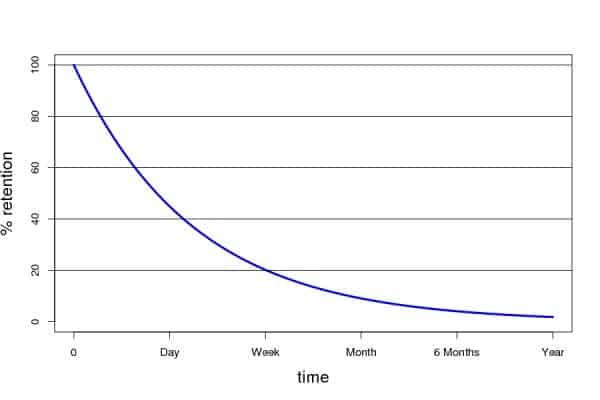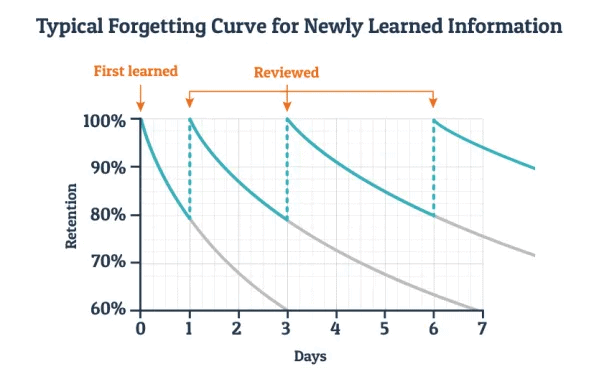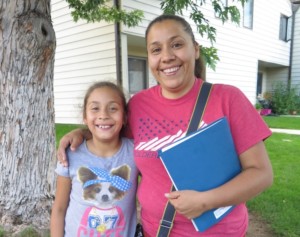School Isn’t About Classes, It’s About Learning

By: Garrett Smiley
If you found yourself in a conversation about curriculum, you would likely hear the terms “scope” and “sequence.” Scope describes the amount of content covered in a unit of time. Sequence describes the logical order the teacher will introduce the content. In other words, the scope is U.S. History; the sequence is the order the class goes through the events. These tools allow us to discuss teaching scientifically. “What if we increased the scope of this course by 10% to include this war?” Administrators feel in control because all learning is carefully planned beforehand. However, just because a class is well-planned doesn’t mean it results in authentic learning. In fact, how most schools think about scope and sequence are relics of a factory-style model of education and are in desperate need of replacement.
As much as we’d like to believe otherwise, you can’t pre-load students with knowledge. The brain is not a hard-drive. You can’t throw a student in a class about “European History” for four months and expect them to retain that information until they need to use it. How much do you remember from high school? If you’re like the rest of the population, you don’t remember much. In one study from the UK, university freshmen only remembered 40% of what they supposedly learned during their intensive, college-preparatory high school classes. Even though our school systems are designed to teach facts, they’re not even doing that well. If we’re going to align our schools with our children’s brains, we need to rethink “class” as the fundamental unit of learning.
Providing Relevance
The human brain is designed to find relevance. When we don’t see the relevance in our work, motivation plummets. Schools then resort to radical interventions like threats (a.k.a. grades) to maintain motivation. They justify their rules with nothing more than a “because I said so,” with the implied threat of punishment. However, this punishment is not comparable to those which parents have employed for generations. Instead of emotional hostility or even corporal punishment which is over in a few minutes or hours, the school convinces the student that one lousy score ruins their entire future.
This departure from internal relevance to external threats (grades) is wreaking havoc on our students’ mental health; it’s systemically externalizing each student’s locus of control. Or, in layman’s terms, making students feel like they don’t control their lives. This mindset is strongly associated with feelings of anxiety and depression. In the words of researcher and author Peter Gray, citing work from Twenge and her colleagues:
“The shift [from internal to external feelings of control] was so great that the average young person in 2002 was more External than were 80% of young people in the 1960s. The rise in Externality on Rotter’s scale over the 42-year period showed the same linear trend as did the rise in depression and anxiety. It is reasonable to suggest that the rise of Externality (and decline of Internality) is causally related to the rise in anxiety and depression. When people believe that they have little or no control over their fate they become anxious: ‘Something terrible can happen to me at any time and I will be unable to do anything about it.’ When the anxiety and sense of helplessness become too great people become depressed: ‘There is no use trying; I’m doomed.'”
Teenagers today are 5x more likely to be depressed than teenagers two generations ago, suicide is now their 2nd leading cause of death, and approximately 1 out of 7 are taking powerful, psychiatric drugs for their mental health concerns. Something is seriously wrong—and schools are playing a big role in this trend.
The easiest way for schools to ensure individual relevance and therefore counteract these concerning mental health trends is by letting students lead their education through curiosity. All the school must do is fuel the interest with high-quality content and mentorship, then provide academic credit.
However, in most schools, classes just linearly progress through a textbook. Students leave their curiosity at the door. (And eventually, they stop bringing it to school altogether.) The only relevance they can decipher is that the information will be on a test—and tests determine their future, or so they’ve been told. Naturally, once the test is over, their brains can no longer find relevance, and it will quickly decay. In fact, researchers hypothesize that forgetting content may be a coping mechanism for the stressful school environment. It doesn’t have to be this way; this learning structure was invented, not discovered: it’s an artificial system that can change.
But, word of warning, when you allow students to direct their education, their aspirations won’t neatly fall within one subject. Instead, they’ll prefer to tackle interdisciplinary projects or research—which is how problems present themselves in the real world! Although this requires us to rethink the structure of our schools, interdisciplinary learning is terrific for transfer: the golden goose of education.
Transfer
The term “transfer” originates from Edward Thorndike, a 20th-century pioneer in educational psychology from Columbia’s Teachers College. Put simply, transfer is the ability to use knowledge outside of its original context. Transfer can only happen when students internalize the “meaning” or “deep structures” behind a concept. If a student in a math class thinks multiplication is just a process they use when they see an “x” between two numbers, they won’t know how to solve a problem like “if there are 7 groups of 7 soldiers, how many soldiers are in the army?” They would have failed transfer because they didn’t understand the underlying meaning of multiplication. It may seem obvious, but I’ll say it nevertheless: transfer is the purpose of school. If learning didn’t transfer outside of the classroom, students’ knowledge would vanish when they walked out of the school or attempted to solve a problem outside of a textbook. Unfortunately, our schools aren’t encouraging transfer. In fact, a research team at K-State showed minimal or negative transfer between the related subjects Trigonometry and Physics among their undergrad students. Even if students are learning, their knowledge is stuffed into a file box that will never be opened. And research shows us that transfer is not natural for learners. Even if two problems are remarkably similar, surface-level traits can derail our analogical problem-solving abilities. Unless we’re taught to see the “deep structures” and interrelatedness between several fields, students will continue to build up knowledge that will never be useful. They’re memorizing steps that will only ever be helpful for a test.
How can we solve this? Before I discuss optimal school design to solve this transfer crisis, there are two more principles we need to discuss: interleaving and spacing.
Interleaving and Spacing
Schools treat students like computers. They try to load the students’ “hard-drives” with information that can be accessed upon request years later. That’s not how brains work. Instead of imagining your brain as a hierarchical file structure, think of it as a map, lattice, or ecosystem. Instead of folders, you have “nodes.” These nodes are connected with paths. Every time the path is used, it gets “wider” and is more likely to be used in the future—much like natural trails made by animals in the forest. But, if it falls out of use, the foliage will slowly reclaim the trail (forgetting). But, forgetting is good! It helps us avoid old, unused paths that may be leading us to an irrelevant destination. The underbrush obscuring the path tells us, “you haven’t needed this in a long time; go look for a more recent trail.” To ensure students can easily traverse the forest of their mind, we need to be clearing multiple paths to the same place and coming back to clean the existing paths regularly. In learning science, those two principles are interleaving and spacing, respectively.
Interleaving is just a fancy word for “mixed practice.” Meaning, even though most students assume it’s best to study one thing at a time until they’re proficient, it’s actually better to learn a few things at a time. If a student has to finish physics homework from chapters 1, 2, and 3, they should complete one question from each chapter in a cycle instead of completing the questions sequentially. Solving problems from each chapter should look like 123123123 instead of 111222333. You’ve encountered the importance of interleaving if you’ve ever observed a student who aced a math practice test when the questions were separated by chapter but struggled when the questions were randomly ordered. That’s because the student never had to internalize the difference between the techniques—they just know to use factoring when they’re in the chapter called “factoring.” They become a pattern-matching machine—very minimal transfer. Furthermore, when students have to differentiate between multiple types of learning, they are automatically comparing and contrasting the “nodes” of knowledge. This means students are priming themselves for transfer because, in an interleaved environment, they won’t be successful unless they ask themselves, “how is this topic different from that topic?” This generates a multi-dimensional encoding of the material that naturally exists in relation to other nodes. Blocked practice is for hard drives; interleaving is for human brains.
Spacing, formally called “The Spacing Effect”, is the cousin of Interleaving. This effect is built on an intuitive principle: memory fades over time. Scientists have dubbed this fading “The Ebbinghaus Forgetting Curve.” Simply put, our brains will slowly forget information if we do not use it at regular intervals. If information is only presented once—say, for a test—it will not stick; the knowledge will asymptotically approach zero within one year.

However, every time a person recalls the information, it decreases the forgetting slope and (theoretically) increases the asymptote. More exposures over more time create stronger memories. I’ll attempt to explain this through analogy with the wildly-popular SM-2 algorithm for spaced repetition used by programs like Duolingo and Anki—stay with me! This algorithm aims for the retention of information to remain above 95%. According to SM-2, even if a student is exposed to a piece of content 5 times within the first month of learning, the students would still need a review session 21.5 days later—then, 36.6 days after that. The moment we stop reviewing the content with the students, they become victims of the forgetting curve. But, every time we re-expose the students to the content, their brain thinks, “oh, this has been important multiple times, I should remember it.” So, it should be the goal of educators to expose students to the same piece of information multiple times over multiple years.

When considered together, interleaving and spacing suggest a school structure that looks very different from the traditional model. Today, classes are scoped as “English Literature” or “Physics” to take place daily for 45 minutes—that’s nearly the definition of block learning. Interdisciplinary classes should be the rule, not the exception. Students should use their learned concepts in different, increasingly difficult situations over multiple years.
A Post-Class School
Following these principles, the goal of a school should be to light the fire of interest, fan it with resources, then recognize exploration for academic credit. Achieving this requires a few paradigm shifts.
First, imagine a students’ time in school as one, long “class.” At Sora, an innovative online high school, we have hundreds of competencies students must demonstrate during their time in high school. We track each competency, which we call “Skills,” on a 5-point progression. That means students will need to demonstrate the application of each skill 3-4 times at increasing depth to be marked as “competent.” We don’t care how they show their competencies; we have projects led by industry professionals, learning goals, expeditions, independent activities, and many other opportunities. Students are allowed to enroll in whatever opportunity is most interesting to them. Out of the hundreds of options, a student won’t choose a learning opportunity unless there’s at least an inkling of curiosity. We design these learning opportunities around interdisciplinary questions like “is there a such thing as objective truth?” or “how might we raise awareness of vaccination stations in our community?”. Students learn just in time instead of just in case; by solving problems that are interesting and relevant to them, they eat up all the skills and knowledge necessary to make it happen (opposed to learning subjects on the chance they become relevant in the future, by which point they’re already forgotten).
Even though we don’t have a standardized academic sequence, students aren’t likely to focus on any one skill at a time. Each demonstration of competency is usually spread apart by a few months or even a few years. So, students at Sora are constantly experiencing The Spacing Effect. Each piece of content they learn will require at least 3 levels of depth with each application of the skill happening months apart in widely different scenarios. They may get a “level 1” by watching a documentary, a “level 2” from participating in a debate, a “level 3” by doing a hands-on project, then a “level 4” by making an informational Youtube video. We’ve built spacing and interleaving into the very foundation of our school. That’s much better than one or two nights of cramming.
Since diving head-first into this world of progressive education, I’ve been disappointed by the lack of innovation. The industry is stuck optimizing a broken system. At some point, we consider a car “totaled” because the cost of repairs is greater than the cost of replacement. Well, the education system is totaled. We can’t incrementally innovate our way out of this hole. Every metric indicates that we’re failing our children and they’re badly suffering because of it. At what point will we say, “enough is enough”? Will we wait until a third of our students are clinically anxious or depressed or knowledge retention falls below 25%? It’s painful to imagine that future, but it will soon be our reality if we allow these horrible trends to continue. In the early 1800s, the United States built its public schools with a new vision for education: fuel for the industrial revolution. We need a new vision. We need a new starting place.
For more, see:
- From Pandemic to Possibility: Now is the Time to Consider Competency-Based Education
- Shining the Competency Education Light on Education in the Time of COVID-19
- Where Lifelong Skills and Curriculum Mee
Garrett Smiley is CEO and co-founder of Sora Schools. Follow him on Twitter at @gw_smiles.
Stay in-the-know with innovations in learning by signing up for the weekly Smart Update.


Nikki Dyess
There are other reasons school prevents learning too - fear of "bad" grades, lack of faith in one's abilities (usually due to previous unpleasant experiences with grades - including A minuses), an occasional uninformed teacher, illogical or inherently dull teaching methods and books, lack of individual attention. Colorado Springs Fencing Pros
Directory Listing
I agree. The brain learns things and makes associations that we are not even aware of. As humans, we survive by learning.